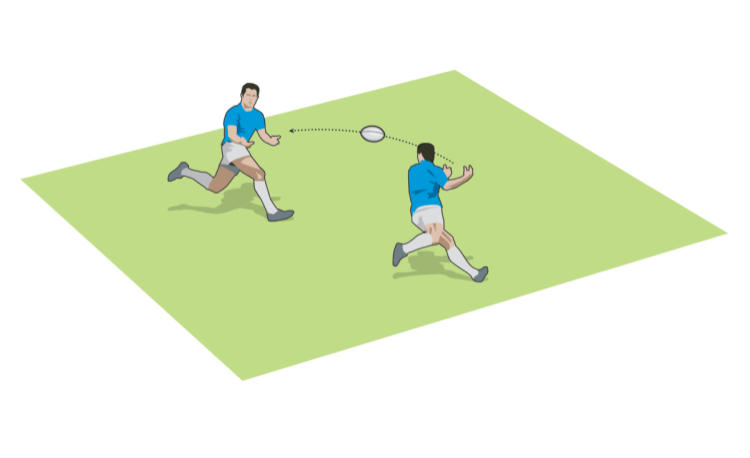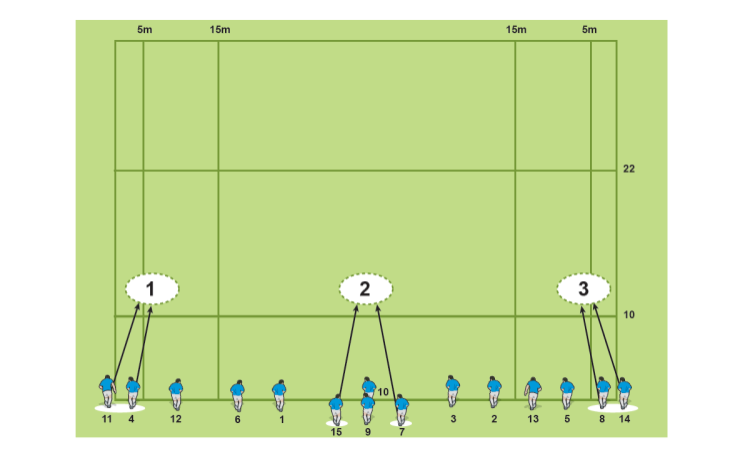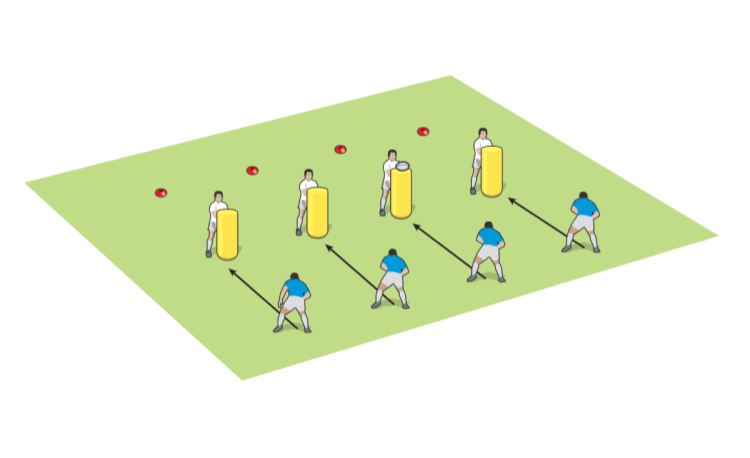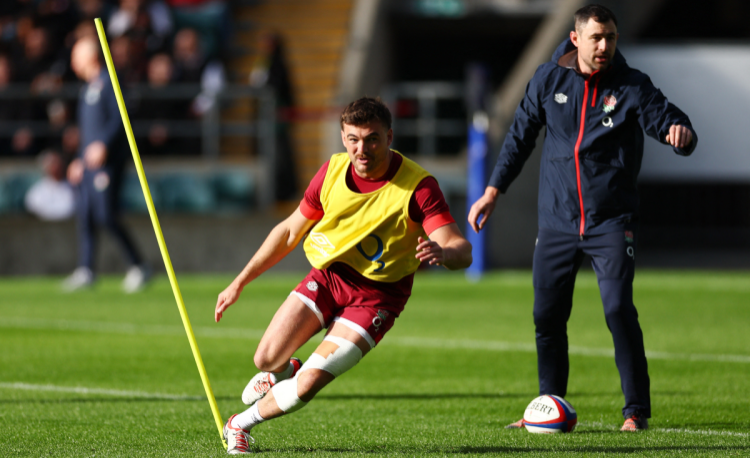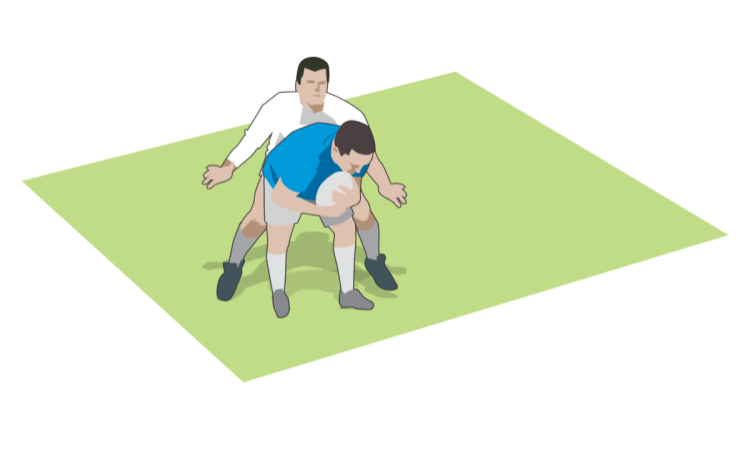You are viewing
1 of your 2 free articles
Powerball
Develop ball carriers with some grit and determination to power through the tackle situation. If they don’t break the tackle, at least they provide a good target for their support players. This session creates ways to test their mettle.
Sometimes the attacker needs a bit of brute force to break through. The support players have to react to keep the continuity going.
ACTIVITY
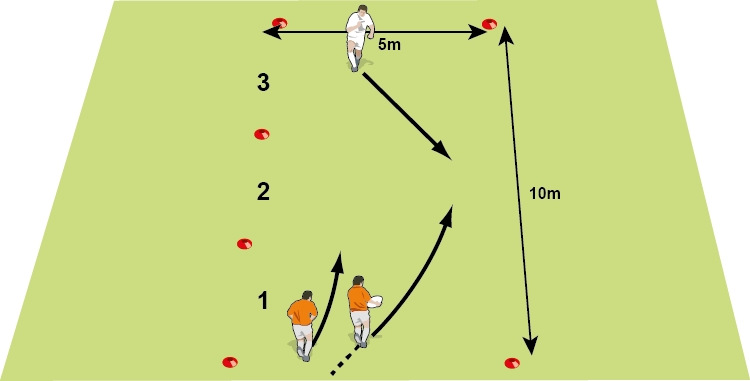
- Put two attackers at one end of a 10m x 5m box - a ball carrier and support player - with a defender at the other end.
- Get the ball carrier to aim to make as much ground through the channel before being tackled or driven out.
- The support player can help drive the ball carrier forward.
- Note how far the ball carrier travels and award points. Swap players around.
DEVELOPMENT
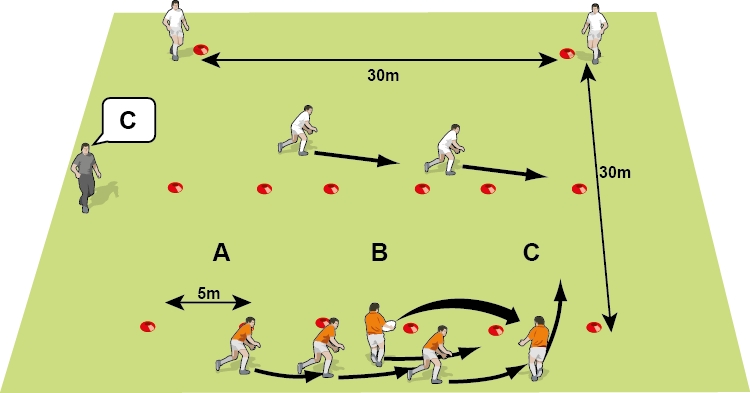
- Set up three-lettered 5m “power boxes”. Put five attackers behind the boxes and two defenders in front, with two more defenders at the far corners.
- Shout out which box the attack must advance through.
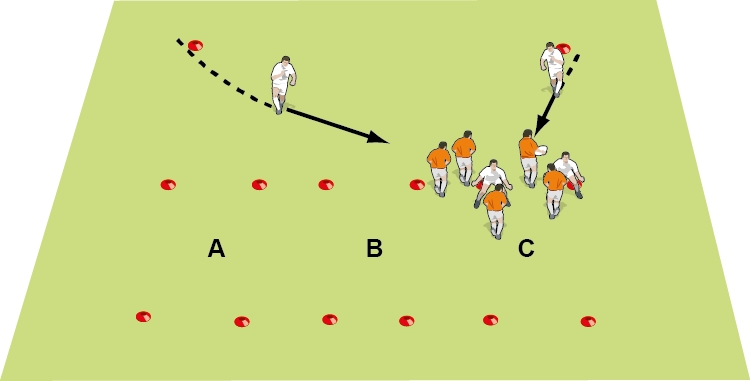
- One attacker takes the ball into the box and is not allowed to pass. If they do not make it to the far end, the ball is recycled and can be played from that ruck.
- Once the attackers are through the box, the two furthest defenders can move forward to join in. Play normal rugby.
TECHNIQUE
- Take on the defender by driving hard at their edges.
- Keep the ball away from the defender.
- Aim to win the collision contest before deciding how to use the ball.
Related Files
Newsletter Sign Up
Coaches Testimonials

Gerald Kearney, Downtown Las Vegas Soccer Club

Paul Butler, Florida, USA

Rick Shields, Springboro, USA

Tony Green, Pierrefonds Titans, Quebec, Canada
Subscribe Today
Be a more effective, more successful rugby coach
In a recent survey 89% of subscribers said Rugby Coach Weekly makes them more confident, 91% said Rugby Coach Weekly makes them a more effective coach and 93% said Rugby Coach Weekly makes them more inspired.
Get Weekly Inspiration
All the latest techniques and approaches
Rugby Coach Weekly offers proven and easy to use rugby drills, coaching sessions, practice plans, small-sided games, warm-ups, training tips and advice.
We've been at the cutting edge of rugby coaching since we launched in 2005, creating resources for the grassroots youth coach, following best practice from around the world and insights from the professional game.







